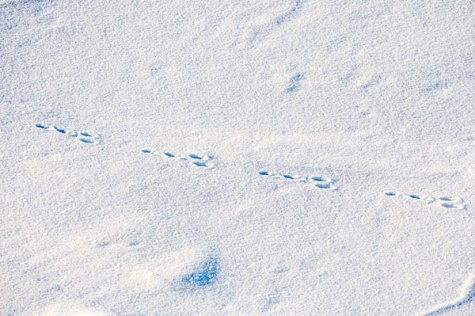Track trail of brown hare
Photo: Sven Začek, www.zacekfoto.ee
Translation: Liis
Bunny tracks
Brown hare; European hare Halljänes Lepus europaeus
Brown hares inhabit fields, meadows, forest verges and thickets. They come out to forage in evening dusk, staying in hiding during the short prewinter day. The snow is melting but the track paths of hares are still visible. No ice crust formed on the snow cover, and for food grass is scraped out from under the snow. When real winter and snowdrifts arrive brown hares change over to tree bark and twigs, with a significantly lower nutritional value compared to summertime. So hares have to let the food pass the body twice. The first nearly liquid excrements contain bacteria that help to break down the rough food better and liberate what was not taken up by the intestines on the first round. Hare droppings are the remains of the second round. So economically hares use food the year round.
The brown hare has a dense pale greyish-brown winter coat, underbelly whitish; the little tail tuft that is black on top looks the same throughout the year, thus a good identification characteristic.
There were no brown hares in Estonian nature before the 19th century. The hares inhabiting Lithuania moved gradually northwards, and the Baltic-German manor lords also brought in brown hares that had earned a reputation in Europe as tricky hunting prey.









